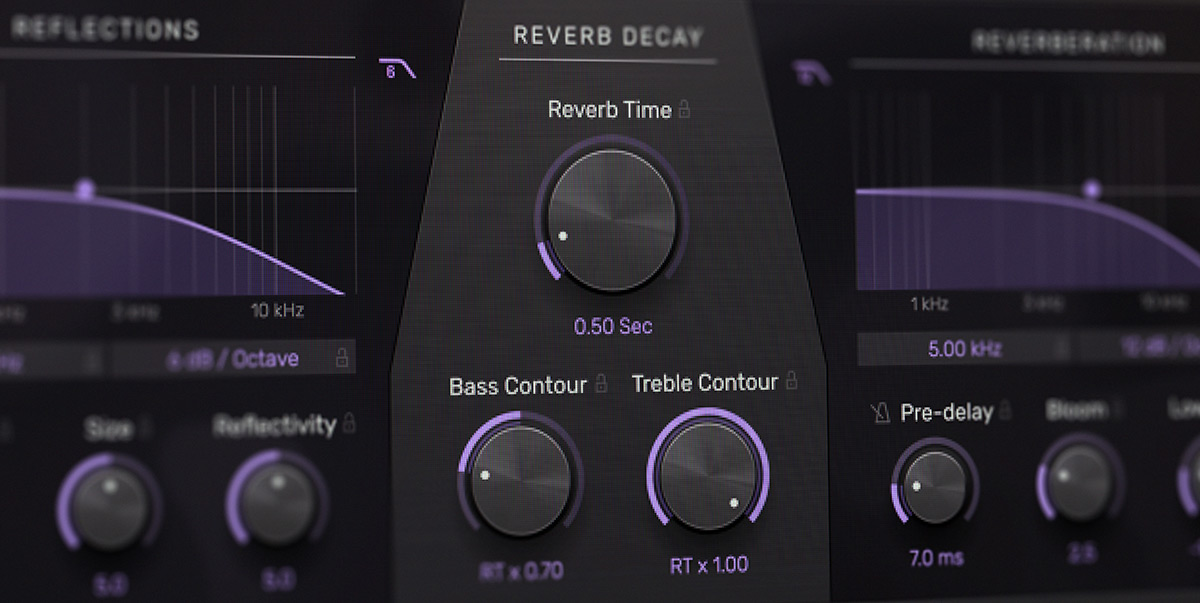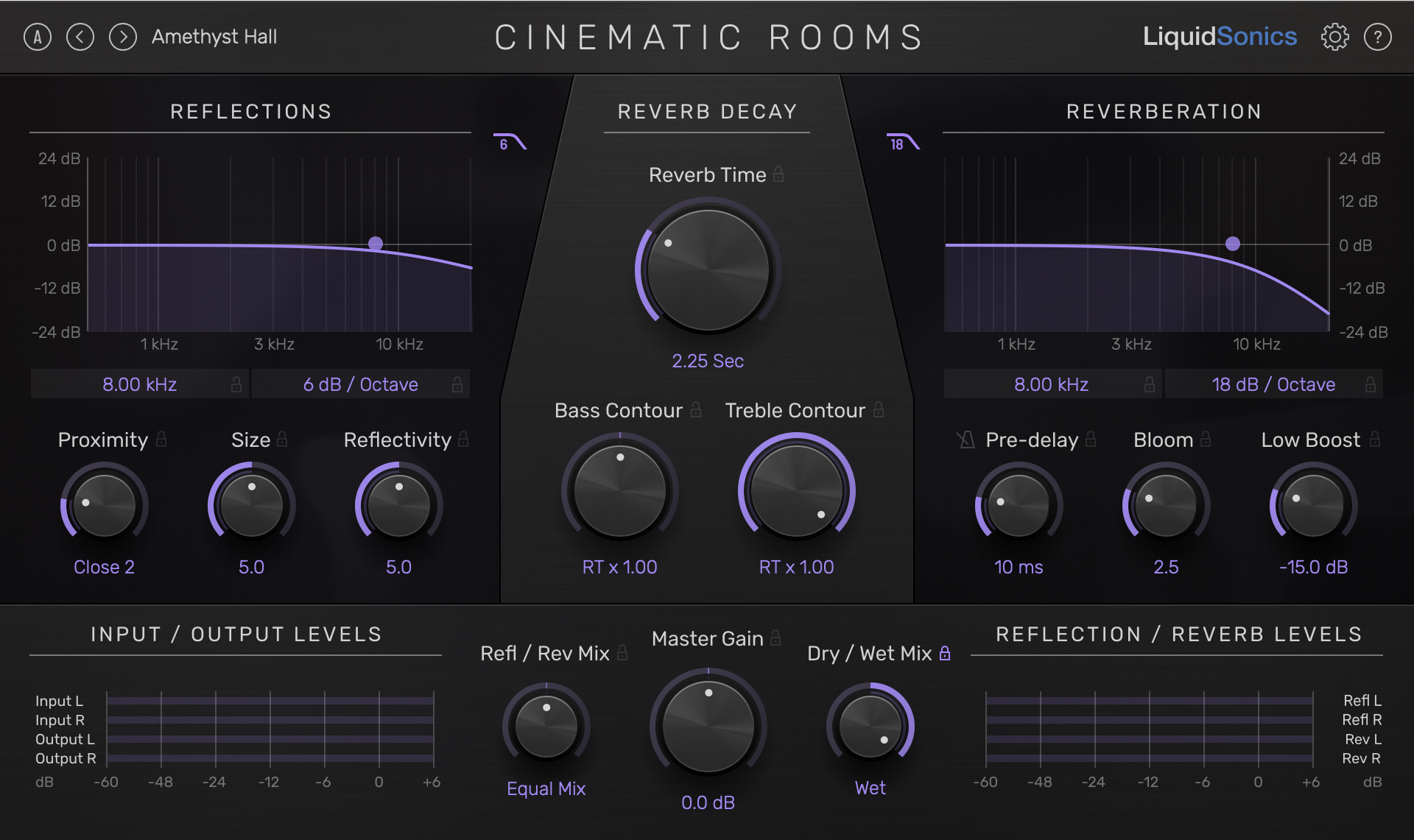
Modern reverbs are full of complex parameters and terminologies, so it’s easy to just reach for the reverb time and pre-delay without thinking too much more about what the rest of them do.
In the early years digital reverbs were simpler. Many were designed to hit a cost target, so only the highest end devices had more than a few simple dials and a couple of push buttons on their front panel – they were somewhat easier to drive!
Take the Lexicon 200 or Lexicon PCM 60. In the 200 we have a basic reverb decay time dial and two decay contouring controls with 3 positions – it is quite incredible how flexible that actually was in practise. Add in a pre-delay and a roll-off filter with 3 positions, and that’s basically it. The PCM 60 pared this back even further with push-button decay times!
The 200’s reverb time dial controls how long it takes for the reverb to decay to 60 dB below its maximum. When you select a 1 second reverb in any reverb today, it is calibrated to reach this 60 dB point after a second. What contouring does is affect how long that decay takes for all frequencies above or below a specific point so we can have frequency dependent reverb times.
That is important because real rooms roll off frequencies differently depending on their characteristics. Tiled rooms have longer high frequency decay times, furnished halls roll off the highs more quickly. All rooms exhibit frequency contoured decay times.
In the Lexicon 200, those the contouring points were fixed to 100 Hz and 10 kHz. Selecting the 0.25x position for the 10 kHz contour means that at 10 kHz the reverb will only take a quarter of a second to reach the 60 dB point if the reverb time is a second long – so the high end rolls off faster than the low/mid range – the decay has been contoured.
This differs from rolloff filtering in a critical way – contouring is time dependent, rolloff is fixed. In the Lexicon 200, the static rolloff filters are set to:
High – 10 kHz (48 dB/oct)
Medium – 7 kHz (6 dB/oct)
Low – 3 kHz (6 dB/oct)
Selecting one of those filters applies a static low pass to the output of the reverb, but doesn’t it doesn’t change how the decay develops over time in any way.
The contour filters sit inside the body reverb loop rather than sitting outside it. That means as audio circles round the reverb’s feedback delay loop it is rolled off a little bit more each time round (there may be more than one filter round the loop in practise). Initially the sound has not hit many filters – so the start of the decay is reasonably flat (that is why static rolloff filtering is also needed).
As it goes round it hits the filters again and again, so rolls the highs off a little more each time (or cuts / boosts the lows). The filter values are calculated so that after a multiplier of the reverb time they will have rolled off enough high frequency content to contour the decay by the desired amount.

In Cinematic Rooms the concept will be familiar for anybody that used a Lexicon 200. We have fixed contouring frequencies, 6 kHz for the treble and 800 Hz for the bass.
Extending the bass contour time by 2x will double the reverberation time of everything at 800 Hz. Reducing the treble contour time by 0.5x will half the reverb time of everything at 6 kHz (and cut it back even more above that frequency so the decay can hit 6 kHz at exactly the right moment). The contouring and rolloff filters used in Cinematic Rooms are not the same as those in the 200, which is why different contouring points were selected.
The professional edition has a little more flexibility and with that comes the ability to define the frequency band positions for contouring.
You may be wondering how the low boost differs from bass contouring. This applies a decay-time dependent very low frequency boost to the initial reverb so that you can immediately add extra body to the very shortest reverbs whilst still adding some low end weight to long reverbs without swamping the room with unnecessarily boomy bass as was often a problem with early digital reverbs that contained unconstrained low boosts. Try playing with this on drums in small rooms, it really helps to define a rich but clean low end for the space.
The Lexicon 200 and Lexicon 60 were a real inspiration when designing the interface for Cinematic Rooms. I wanted to see just how much presets variability could be achieved and how much power could be handed over to the producer with a minimum of controls. In a reverb like the standard edition of Seventh Heaven it is easy to hide the complexity of what is going on because many parameter changes are encapsulated by the differences in each presets’ captures. People love the breadth despite its simplicity, and that was easy to achieve since the captures all have so many variations in the Bricasti M7‘s many parameters. I wanted to achieve a similarly appealing rapid workflow and varied sound in Cinematic Rooms, but knew I would reserve the deeper editing for the professional edition. That was a real challenge so I looked to the past to see if some forgotten technological limitations could inspire a sense of minimalism in a modern design.
